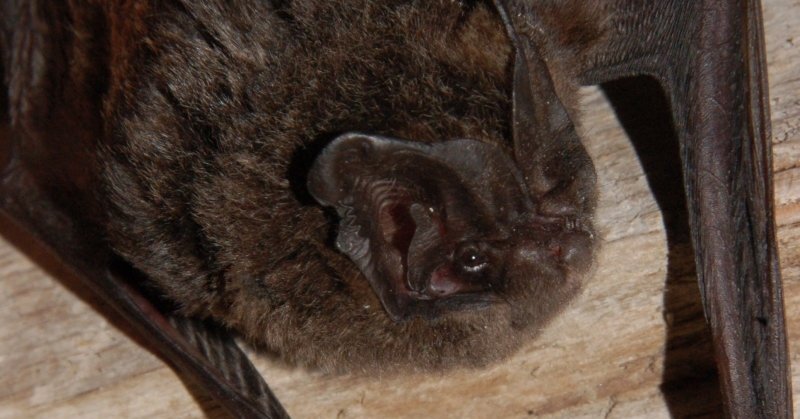AS “Latvian state forests” defines a protected natural area for the protection of a rare bat species in Latvia, according to information published by LVM.
–
–
Content will continue after the ad
Advertising
–
In order to protect the habitats of the European long-eared bat, which is rare in Latvia, LVM has designated a protected natural area “Koknese – Odziena” on an area of almost 8,000 hectares, which is one of the potential for the future”Natura 2000” territories.
In addition to the already existing specially protected natural areas and micro-reserves managed by LVM, the company in cooperation with Nature protection administration (DAP) has identified new territories that could be included as well European Union (EU) in the “Natura 2000” network of protected natural areas.
Protected natural territory is defined to ensure the preservation of European wide habitats, protected biotopes of Latvian and EU importance and other specially protected species, as well as public education and recreation opportunities that do not conflict with the protection of natural values.
Jānis Belickis, head of the forest management planning of the LVM Vidusdaugava region, states that according to the opinion of experts, this area between Odziena, Koknes and Klintaini is the most important in Latvia for ensuring the protection of the European broad-leaved species, therefore LVM has worked according to the recommendations of the species protection plan, in cooperation with DAP and species experts at the search for the best solutions in the territory of the state forests and has also prepared the wording of the rules for the individual protection and use of the new protected nature area.
“LVM Vidusdaugava region is one of those areas in which the structures of walking forests are also relatively widely represented. One of the important aspects for the protection of these structures is the indivisibility of larger areas, so in 2021 and 2022 we worked to identify areas that could potentially be included “In the Natura 2000 network,” Belickis explains.
In the LVM Vidusdaugava region, this extension covers more than 19,000 hectares, which is more than a 40% increase from the current area. A significant possible extension of the “Natura 2000” network of LVM in the Vidusdaugava region will be formed by the protection territory of the European broadleaf.
The European bat can be found in Latvia all year round and is relatively closely tied to its place of residence – as long as there are suitable winter and summer habitats and feeding places in the territory, the territory used by this bat during the year is usually only a few tens of kilometers. To the best wintering places, the European plover can fly even further.
“Instead of the new specially protected nature area, both suitable summer and wintering areas are included, and it is an area where the species has been regularly observed in all seasons since the end of the last century. So far in Latvia, swarming has been detected only in this area in autumn, which can be explained by possible mating and providing habitats for the new generation, but for us it means that bats have serious intentions for a permanent life in this area,” explains LVM environmental expert Ilze Kukāre.
By modeling different situations and looking for the best solutions, the total potential created territory has been divided, creating a zoning where the area of protected landscapes is 4,723 hectares, the nature park area is 1,432 hectares, and the nature reserve area, where it is forbidden to build tents and light bonfires outside of specially established public recreation areas sites and yards, make up 1621 hectares. But the zone of the regulated regime, in which any wood extraction is prohibited if it is not related to special habitat care measures, but hunting, road maintenance, and fire protection measures are allowed, is 69 hectares.
In the summer, the European wagtail feeds in broad-leaved forests, parks, alleys and water banks. During the day, they hide in the form of tiles under dead trees, mostly pine bark in Latvia, in tree crevices and sometimes in the roofs of buildings. The suitable habitats under the bark are temporary, they are used a few times, so it is important for us to keep creating new hiding places in the territory, but also to have suitable stands of trees within reach that would ensure feeding. An important element during twilight is the various strips of trees that connect roosts with feeding areas and also provide a path to wintering areas. On the other hand, in the darkest part of the night, the bat can also cross open areas.
More than 23% of the total land area managed by LVM, which includes forests, swamps, agricultural lands and waters, is managed by LVM with the purpose of nature protection. 12% of the forest areas in this total area are nature protection areas, where forestry activity is prohibited by regulatory acts. On the other hand, 8% of economic forests are managed by LVM, on the company’s own initiative, with additional conditions for environmental protection, recreation and environmental knowledge, creating micro-reserves and protecting habitats.
The sole owner of LVM is the state, while the share holder – The Ministry of Agriculture.
–


/photo/2022/07/19/whatsapp-image-2022-07-19-at-71-20220719071219.jpeg)